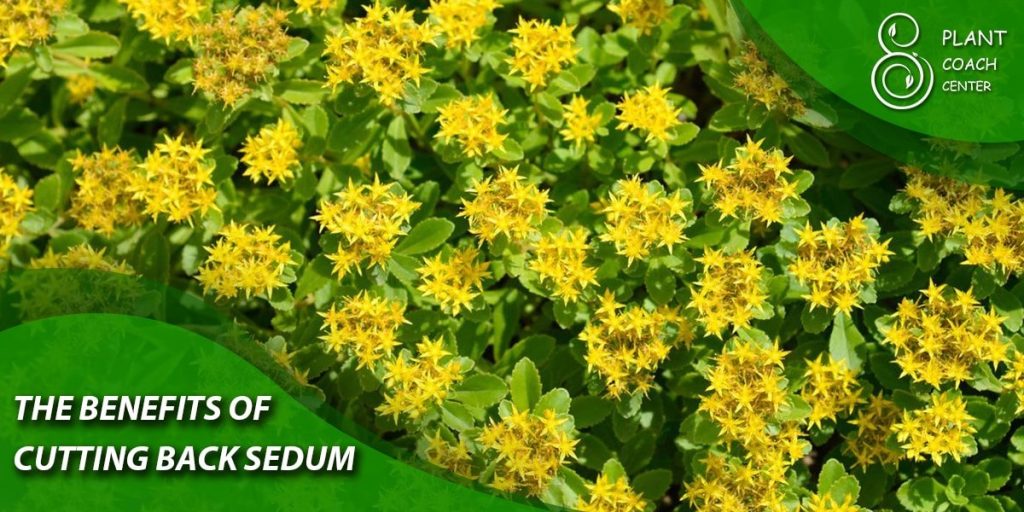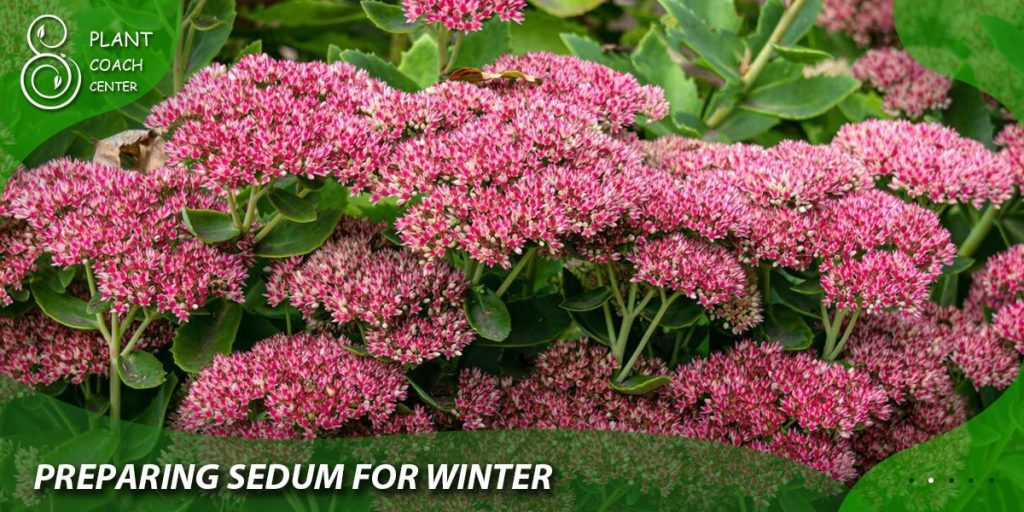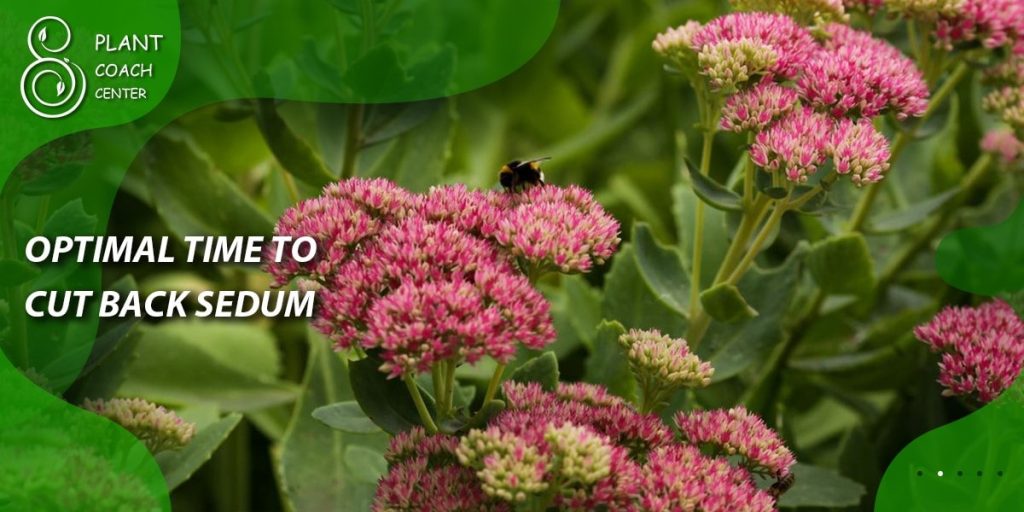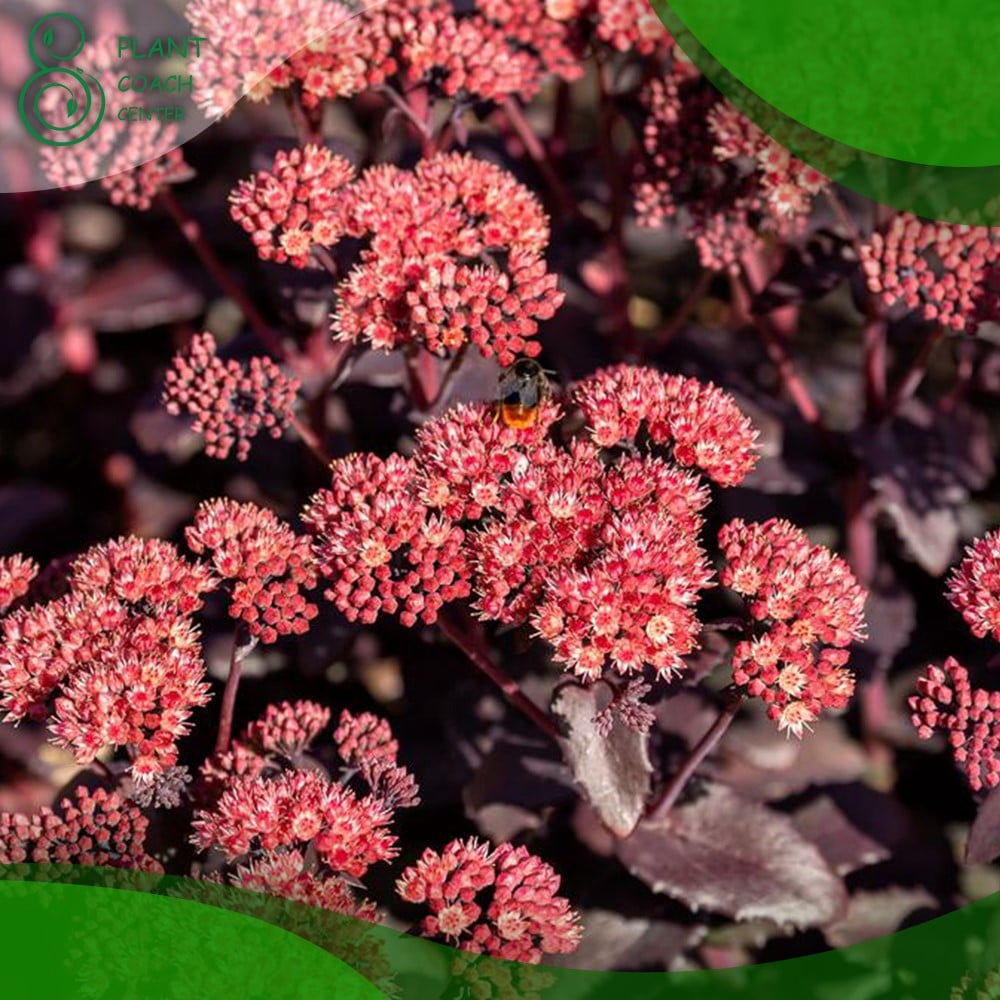When To Cut Back Sedum
Sedum, often referred to as stonecrop, is a diverse and hardy genus of succulent plants known for their vibrant colors and fleshy leaves. These resilient beauties are popular among gardeners and landscaping enthusiasts for their low-maintenance and ability to thrive in various conditions.
Proper care and maintenance are essential to ensure the longevity and health of sedum plants. One crucial aspect of their care is knowing when and how to cut them back, especially as winter approaches.
Understanding Sedum Plants
Sedum plants belong to the Crassulaceae family and encompass many species, each with unique characteristics and growth habits. From low-growing ground covers to upright varieties that can reach impressive heights, sedums offer versatility in landscaping designs. They can also adapt to different climates, making them suitable for various regions.

The Benefits of Cutting Back Sedum
Promoting Plant Health and Vigor
Regularly cutting back sedum plants helps maintain their overall health and vigor. Removing dead or diseased parts prevents potential issues from spreading and robbing the plant of essential nutrients. This allows the sedum to redirect its energy toward new growth and flower production. Additionally, pruning stimulates the plant’s natural defense mechanisms, encouraging it to form healthy new shoots and leaves.
Aiding Winter Survival and Regrowth in Spring
One of the most significant benefits of reducing sedum is its positive impact on winter survival. As colder temperatures set in, sedum enters a period of dormancy to conserve energy. Pruning before winter helps the plant shed excess foliage and concentrate its resources, ensuring it can withstand freezing temperatures and potentially harsh weather conditions. Come spring, the well-pruned sedum is better equipped to initiate new growth, leading to healthier and more robust plants.
Enhancing Aesthetic Appeal
Sedum’s visual appeal is a major reason gardeners and landscapers value these plants. Pruning plays a vital role in enhancing their aesthetic qualities. Trimming away spent flowers and leggy growth keeps the sedum looking tidy and well-groomed throughout the growing season. Properly pruned sedum plants maintain their shape and size, creating a more visually pleasing landscape or garden design.
Encouraging Flowering and Blooming
Certain sedum varieties are renowned for their vibrant and captivating flowers. By cutting back sedum after the flowering period, you promote the development of new buds for the following year. This cyclic pruning encourages more prolific flowering, leading to a more striking display in your garden or landscape.
Controlling Size and Growth
Sedum can be vigorous growers; in some cases, they may outgrow their designated space. Pruning allows gardeners to control the size and spread of sedum plants, preventing them from becoming invasive or overcrowding other nearby plants. This control also ensures that the sedum doesn’t encroach on walkways or structures, keeping the garden visually appealing and well-organized.
Facilitating Propagation and Rejuvenation
Pruning provides an excellent opportunity for propagation and rejuvenation of sedum plants. Gardeners can root healthy cuttings from pruned stems to create new plants. This is particularly useful for expanding your sedum collection or replacing aging or weak specimens with fresh, vigorous ones. Furthermore, rejuvenation pruning can help revitalize older or overgrown sedum plants, encouraging them to produce new growth and rejuvenate their appearance.
In summary, reducing sedum offers numerous advantages that contribute to the plant’s overall health, winter survival, and beauty. Regular pruning fosters robust growth, enhances the appearance of the garden or landscape, and ensures that the sedum continues to dazzle with its striking colors and flowers year after year. By understanding the benefits of pruning and implementing proper techniques, gardeners can optimize the performance of their sedum plants and enjoy a thriving, visually appealing garden.
Determining the Right Time to Cut Back Sedum
Knowing the appropriate time to reduce sedum is essential for maximizing its benefits. Like many other plants, Sedums go through distinct growth cycles throughout the year. Understanding these cycles and observing certain signs will help you identify the right time for pruning.
As winter approaches, sedum plants show signs of slowing growth, especially in colder regions. You’ll notice that their leaves might change color, often taking on deep red or copper hues. This is a natural response to decreasing daylight hours and signals that it’s time to prepare them for the winter ahead.
The ideal time for cutting back sedum is in late fall, just before the first hard frost sets in. This timing allows the plants to recover from the pruning shock and prepare for their dormant phase during winter. In regions with milder climates, you can opt to prune them back in early winter, as long as it’s before the coldest temperatures arrive.

Preparing Sedum for Winter
Once you’ve identified the right time to cut back your sedum plants, taking a few preparatory steps is essential to ensure they enter the winter season in optimal condition. Proper preparation can significantly affect their ability to withstand the colder months.
Assessing Sedum Condition and Age
Before you start pruning:
- Assess the overall condition of your sedum plants.
- Look for any signs of disease, pest infestations, or dead stems. If you notice any issues, address them before proceeding with the pruning process.
- Consider the age of your sedums.
Younger plants might require less extensive pruning than older ones, which tend to accumulate more dead growth over time.
Providing Proper Nutrition and Hydration
Well-nourished sedums have a better chance of surviving the winter months. Make sure to feed your sedum plants with a balanced fertilizer during their active growing season, typically in the spring and summer. Avoid fertilizing them in late summer or early fall, as this can encourage new growth that may not have enough time to harden off before winter.
Additionally, ensure your sedums receive adequate hydration before winter arrives. While they are generally drought-tolerant, well-hydrated plants are better equipped to endure cold and dry conditions.
Removing Debris and Preventing Disease
Before pruning, remove debris, fallen leaves, or dead plant material from around the sedum plants. Decaying organic matter can create a breeding ground for pests and diseases, potentially harming your sedums during the winter months. Keeping the area clean and tidy reduces the risk of winter-related problems.
If you notice any disease or pest infestations, address them promptly. Consider using natural or organic remedies whenever possible to avoid harmful chemicals impacting beneficial insects and wildlife.
Techniques for Cutting Back Sedum
Now that you’ve prepared your sedum plants for winter, it’s time to focus on the actual pruning process. Using the right tools and techniques to achieve the desired results without causing unnecessary stress to the plants is essential.
Tools and Equipment Required
You’ll need a pair of sharp, clean bypass pruners or gardening shears for pruning sedum. Bypass pruners make clean cuts and minimize damage to the stems, promoting faster healing. Be sure to disinfect your pruning tools with rubbing alcohol or a mixture of bleach and water before and after use to prevent the spread of diseases.
Pruning Methods for Different Sedum Types
The pruning method will vary depending on the type of sedum you have. Here are some guidelines for different sedum varieties:
- Low-Growing Sedums (e.g., Sedum acre, Sedum album): These ground-hugging sedums benefit from a light trim. Use your pruners to remove dead or leggy stems and spent flowers. Trim them back by about a third of their height to maintain their compact form.
- Upright Sedums (e.g., Sedum spectabile, Sedum telephium):These taller varieties may require more extensive pruning. Cut the stems back to about 4 to 6 inches above the ground in late fall. This reduction helps prevent snow or ice damage during winter.
- Creeping Sedums (e.g., Sedum rupestre): Creeping sedums are best pruned by removing unwanted stems and spent flowers. Trim them back to encourage a dense, carpet-like growth habit.
Tips for Achieving Desired Shapes and Sizes
If you have specific design goals for your sedum plants, pruning allows you to shape them accordingly. For example, you can create round, mounded shapes or more natural, irregular forms. Remember that sedums tend to grow outward from the center, so trim the outer stems to achieve the desired shape when shaping them.

Pruning Guidelines for Specific Sedum Varieties
Each sedum variety’s growth pattern and characteristics may influence the pruning approach. Let’s delve into the specific guidelines for pruning popular sedum species:
- Sedum Acre (Goldmoss Stonecrop):This low-growing, mat-forming sedum features bright yellow-green foliage and yellow star-shaped flowers. Prune Sedum acre in late fall by cutting back any leggy or untidy growth. Avoid over-pruning, as this can reduce its ability to form a dense mat.
- Sedum Spectabile (Showy Stonecrop): One of the most well-known sedum varieties, Sedum Spectabile, produces eye-catching flower heads in late summer and fall. To encourage a robust bloom the following year, cut back the spent flower heads in late fall or early spring, leaving about 4 inches of stem.
- Sedum Rupestre (Reflexed Stonecrop):Sedum rupestre is a spreading variety with fleshy, blue-green foliage. Lightly trim it in late fall, removing any dead or damaged stems, and shape it to maintain a neat appearance.
- Sedum Telephium (Autumn Joy Sedum): This tall, upright sedum is admired for its clusters of pink or copper flowers. In late fall, trim the stems to about 4 to 6 inches above the ground to prevent them from flopping over during winter.
- Sedum Album (White Stonecrop): This creeping sedum displays white or pink flowers and works well as a ground cover. Prune the Sedum album lightly in late fall to remove any spent flowers and keep it tidy.
- Sedum Sexangulare (Tasteless Stonecrop):A low-growing, evergreen sedum with yellow flowers, Sedum sexangulare requires minimal pruning. Trim back any straggly stems in late fall to maintain their compact form.
Overwintering Sedum in Containers
For gardeners who enjoy cultivating sedums in containers, overwintering them successfully ensures their survival and vigor.
Transferring Sedum to Containers for Winter
Before winter sets in, consider transplanting some sedum specimens from your garden into containers. This practice offers several advantages, such as moving the containers indoors or to more sheltered locations when extreme weather conditions threaten. Container-grown sedums also allow you to create attractive displays on patios or near entryways.
Pruning Considerations for Potted Sedums
The pruning approach remains similar to garden-grown sedums when preparing potted sedums for winter. Cut back the stems according to the specific variety’s guidelines, taking care not to over-prune and harm the plant’s overall health.
Winter Care and Protection for Container-Grown Sedums
Once your sedums are safely in containers, ensure they receive appropriate winter care. When kept outdoors, provide a layer of mulch around the containers to insulate the roots and protect them from extreme temperature fluctuations. Consider moving the containers to a sheltered area or an unheated garage if severe cold or heavy snowfall is expected.

Additional Considerations for Cutting Back Sedum
As you navigate cutting back sedum for winter, several additional considerations can enhance your success and contribute to a thriving garden ecosystem.
Impact of Sedum on Wildlife and Ecosystems
Sedum plants support wildlife, particularly pollinators like bees and butterflies. As you prune your sedums, leave some spent flower heads intact throughout the winter. These seed heads serve as valuable food sources for birds during the colder months. Additionally, consider providing shelter options for beneficial insects, as they contribute to the overall health of your garden.
Potential Challenges and Troubleshooting Tips
While cutting back sedum generally improves their health, occasional challenges might arise. Over-enthusiastic pruning or pruning at the wrong time can lead to weakened plants. Monitor your sedums after pruning and be prepared to take corrective action if needed. Propagation can help rejuvenate weakened or leggy sedums by producing new plants from healthy cuttings.
Alternative Methods for Managing Sedum Growth
While pruning is an effective way to manage sedum growth, there are alternative techniques that you might consider based on your garden’s specific needs and goals. For example, some gardeners divide sedum clumps in spring or fall to encourage healthier growth and invigorate the plants. Another method involves pinching back sedum stems during the growing season to promote bushier growth and prevent legginess.
Conclusion
Cutting back sedum for winter is a crucial part of their care routine, ensuring their health, winter survival, and aesthetic appeal. By understanding the growth habits of different sedum varieties and identifying the right time to prune, gardeners can enjoy the beauty of these plants year after year.
Through proper assessment, preparation, and pruning techniques, gardeners can help their sedums thrive during the dormant winter months and encourage vigorous regrowth in spring. Furthermore, being mindful of sedums’ impact on wildlife and the ecosystem adds an environmentally friendly dimension to gardening practices.
Remember that each sedum plant is unique; personal observation and care will contribute to your gardening success. By applying the knowledge and guidelines in this article, you can confidently cut back your sedum plants, knowing you are contributing to their overall health and longevity in your garden.
When is the best time to cut back sedum for winter?
Late fall, just before the first hard frost sets in.
How does reducing sedum benefit the plants?
Promotes health, aids winter survival, and enhances aesthetic appeal.
Can I prune sedum in containers differently than in the garden?
Follow similar pruning guidelines, but consider winter care and shelter for container-grown sedums.







